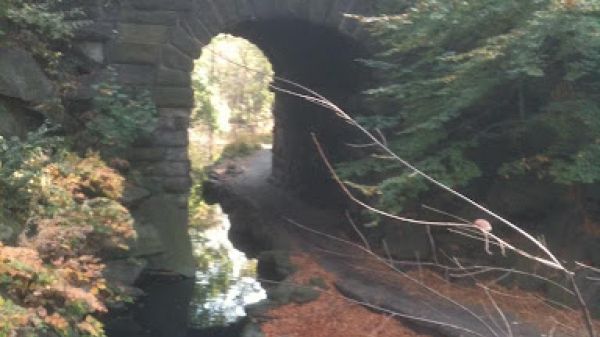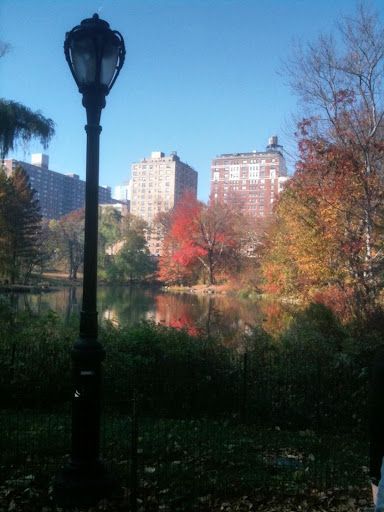An Ode to the Urban/Natural World

This post contains a number of poems written by Rolland G. Smith (unless otherwise noted) alongside commentary provided by Joe Baust.
We often think of the urban world as something devoid of nature. Upon careful inspection we find an occasional oasis, or tucked in some corner or wayward place there is something perfect to remind us beyond the row houses, the concrete and black top.
Sometimes we do not see the obvious. This is a reminder we must “learn to look and look to see.” (Project WILD) Perhaps a park is close by but even outside of urban tree plantings, on street paths, even the mulch around them, the grass growing betwixt and between, there is something for everyone to see, if we take the time.
Consider the following as a window to the urban:

Central Park
Written by Rolland G. Smith
Among the bricks and window stacks Is nature at her best.
Who says within a city place you’ll not have Gaia’s breast?
When pace and sound delay your thoughts, a stroll resets your mind
To where a clear and placid calm belies the city’s grind.
I stand in awe of what I see So close to streets and lights,
For here I hear the crickets’ call yet see the building’s heights.
Tis here, my friend, you’ll find a peace that lingers past your walk.
Its grace will last within your heart though tucked in steel’s frock.
To all who live in Gotham’s clime take time to be outside.
The parks and paths have ponds and grass and nature to abide.
There are some other views one may see that are deliberate, an urban garden of flowers to dress up the dull bricks and mortar. There may also be a place once vacant, dressed up with plants bringing something to eat and festive flowers to admire. What a sanctuary, sharing color and sustenance. What could be better to eliminate the blight? It is a perfect mix of beauty, color, quiet, and calm.

Garden Grace
Written by Rolland G. Smith
Two blossoms yellow, proud above green,
stand strong and know their love is seen
By all who wander and by those who gaze
into this garden of wonder, a maze.
Color binds attention and form holds grace
Attracting heart and spirit in place.
The flowers stand as one and separate too,
symbols of the noble ones, too few.
They come to see and hold this place in love,
Responding to an essence from above.
The nectar is the wine the flowers hold,
Toasting through the touch of zephyr’s gold.
Tell all strangers who pass here, walking by:
The fragrance of the flowers glorifies
The spirit of the earth and nurtured seed
Then we consider what we may call the errant, the unexpected. The serendipitous seed that grows unplanned and unexpected. The question that is often asked by many an urbanite or gardener with respect to this visitor: “What do you call a flower growing outside of a flower bed? A weed indeed”. Of course, that is a statement made by someone disgruntled who feels cursed their sense of order has been upset.
It is our seeming disgust that something would grow in a place we believe it should not. Is worthy of obliteration? Before you say it must be removed, consider some other course of action.
Instinct
Written by Rolland G. Smith
A blossom blooms from neath the sticks
ascending to a raying sun,
Reaching, teaching all the rest,
that trying lets it be one.
It cares not how it started there
nor if the front will take it bite.
Its instinct finds the noble path
to move between and find the light.
It shares the water and the ground,
no drop nor space more than it needs.
Between the rocks on stony crust
first it flowers, and then it seeds.
The splendor of the leafy plant
belies the dry and sandy loam.
The beauty found within the seed
will find a place to make a home.
Maybe we should consider the problem lies not in the growth of something out of place, but in our consideration that in urban, suburban and rural environs it should exist as a tribute to its courage to be outside of our norm. We pose the following: In any place, something may grow outside of our consideration of what is suitable or not; it is an attempt to call our attention to the natural world, something worthy of spending our time observing and extolling. Of course, it is not in the perfect place, and it has become a source of being disorderly. Maybe our notion of “place” is not aligned with the courage of a “weed” to stake its place in the world. But does it deserve our enmity?
We submit the “weed” is there and we, the human, desires order and a “perfect” place. But we submit, it can be chosen for a special person, a bouquet. In our sojourns, if we see a dandelion or a buttercup, out of order or out of place, watch it, be amazed it found its place, and let it live.
Let us celebrate all nature in the urban environment. Look and find a place of nature, even the unexpected, though at times it can be a challenge to the willing and unwilling mindset:

Every Flower
Written by Noel Paul Stookey, Peter Yarrow, and Robert Michael Milstein and included in their album, "Such is Love."
Every flower's reachin' for the sun
Every petal opens when the day has just begun
Even in the city where they grow up through the street
Every blossom needs the sunshine to make its life complete.
Some are torn out by the roots and cast aside
And some might be arranged for a bride
A flower's just a seed when it's young
And every flower's reaching for the sun.
Some are bent by fears they cannot see
And some are touched by love and set free
A flower's just a seed when it's young
And every flower's reaching, every flower's reaching
Every flower's reaching for the sun.
©1979 Public Domain Foundation, Inc.
It is there, a wildflower, a domesticated flower or what we errantly call “a weed”, its intrinsic beauty eases our mind or for those who seek order, back off. No matter where we may find it, feel the grace of its existence.
A “place” to rest our minds in the urban world, a place that exists to provide us with peace in our homes or communities, it is there for us. We need to seek the respite it provides whether planned or unplanned.
Do we find a purposeful garden of flowers placed in a decisive way by landscapers or urban planners? Is it a vantage point of flowers and food that dresses the urban blight? Or is it a plant that arises to say it can? It is not to question why it is there, it is there for us.

As we consider the urban muse to beauty, all are there for us. They are there as we search with the same zeal as though we planted it as if we planned and planted. Even an errant plant, it is a a micro park in the scheme of things until we find a larger place to enjoy the pastoral nature of green space within an urban area.
We consider the natural and the beauty in an urban area though we question anything spontaneous or planned can exist in a jungle of brick, steel, and high rise. But it is there for us. “Seek and ye will find” and be amazed. It is beauty, however small, to rest our minds. And it is good!
A suggested song: "The Flower That Shattered the Stone" by John Denver
(Photo Credits: Joe Baust, taken in Central Park, USFS Land Between the Lakes, and Bregenz Austria)
About the Authors
Rolland Smith is an Emmy Award winner for his work in broadcast news, he has been involved with John Denver’s Windstar Foundation and is a poet and writer of note. He has worked with Edward R. Murrow and Walter Cronkite, titans in the field of broadcast news. Three of his copyrighted poems in the article are used with his permission.
Joe Baust is a Jeske Winner. He has contributed to the eePRO Blog since 2016 and directed a Center for Environmental Education for Murray State University in Kentucky.
Join eePRO today and be a part of the conversation!
Comment and connect with fellow professionals in environmental education. Join eePRO >
